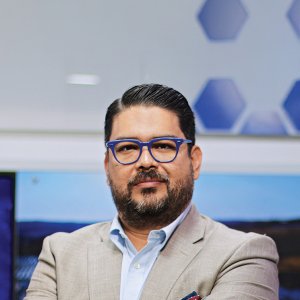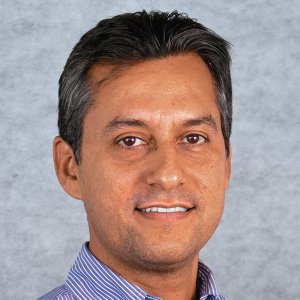Grid Code 2.0, As Explained by One of Its Architects

STORY INLINE POST
Q: What has been a major success story for Diram and how does it represent the company’s specific expertise in the energy sector?
A: Diram has gone through many changes since CRE published the Grid Code in 2016. We are a leader in this area, both in the diffusion and interpretation of the Code. For instance, we were the only specialized service company selected to participate in the consulting committee for the Grid Code. In the past three years, the company has analyzed areas for improving the Code, particularly its use in industrial environments, implementing over 200 workplans and elaborating approximately 350 studies. Diram’s participation with CRE has been a success: We suggested of most of the changes regarding load centers that became part of the recently published Grid Code 2.0. Our proximity to CRE and how its regulation is created has allowed us to become closer to our clients and foster a greater confidence in our work.
Q: How has Diram’s business developed since Mexico unveiled its original Grid Code?
A: Diram has evolved in several areas. Our engineers began studying energy law to understand the legal implications. We strengthened our network of foreign providers to offer state-of-the-art solutions. Major industrial players in various sectors, such as Peñoles, Cemex, Ford and Deacero, are among our clients and we have worked to completely understand their operations. Regarding innovation, Diram was the first Mexican company to install electronic power equipment, such as static synchronous compensators (STATCOM) to meet the Grid Code. From 0 STATCOMS installed in 2016, we now have 26 installed, including the largest STATCOM in the world for industrial players, at Deacero’s Celaya operation. Finally, Diram has worked to communicate the requirements of the Grid Code to industrial players. Our new, professionally filmed webinars are a part of this approach, with the goal of disseminating information about the changes to the Code.
Q: What are the main changes in the Grid Code 2.0 and why is it important for the reliability of Mexico’s electrical networks and its industrial users?
A: There are important changes to load centers, which strengthen the reliability of the network. A clear example is a new requirement to comply with the adequate power factor users connected in medium voltage. In addition, the Code made changes around power quality that improved the balance between the reliability of the network and the feasibility to implement solutions from an economic or technical point of view. We worked hand in hand with the industrial sector, CENACE and CFE’s transmission and distribution arm to review proposals for changes, considering the needs of all sides. Among the significant changes in the power quality section is a new way of evaluating imbalances as well as the permitted levels of harmonic currents and flicker.
Without a doubt, the most important change in the Grid Code 2.0 is that it now the power factor requirement applies to all medium voltage electricity users with an electricity demand. above 1MW such as producers of healthcare products, mines and railroads. The previous power factor parameter only applied this requirement to those connected to high voltages of 69KV and up, which are the country’s heaviest industrial actors. This change will generate a second wave of compliance with the Grid Code, focusing on relatively smaller energy users. Since these companies have smaller budgets to achieve this compliance, we will need to be more creative in how we support them.
Q: How do you see companies being affected in their mission toward compliance in the medium voltage environment?
A: The Grid Code seeks to create the same rules for everyone forming a part of the national grid, whether they are users, generators or transmitters. Therefore, it would be wrong to see companies being affected when everyone benefits from compliance. Companies that do not yet comply will need to make an investment to do so, one that also does not have a direct return. If everyone does their part, the national electricity system will improve and all will benefit from this reliability.
Some of the challenges smaller companies will face is that they are not as developed as very large companies. For example, they might not have an engineering section within the company focused fully on compliance. These companies will need to gather their own resources, find the right adviser and invest in improvements and equipment. Then, they would have to maintain these upgrades. Compliance with the Grid Code is not a snapshot in time, like doing a COVID-19 test in order to travel. It is a continuous process where you need to constantly comply.
Q: What easily attainable tools can Diram offer to clients seeking to meet the criteria of the Grid Code?
A: Diram developed a software called Cloud PQ, the only platform that continuously assesses the criteria of the Grid Code 2.0. Previously, we needed to install equipment, perform measurements and then take the data back to our office to analyze it. With the equipment already installed, we can monitor it around the clock, including through alarms that sound if compliance slips. The application is attainable for any client size.
Q: The Grid Code is a technical tool, but how do you expect to see it altered if the government overhauls the energy sector?
A: Though the Grid Code is based on technical criteria, it is affected by political factors. After all, it was published by CRE and it would be removed by the government if President López Obrador’s electricity reform is passed by Congress. In that case, other government entities would become responsible for publishing it and evaluating its compliance. Nevertheless, the Grid Code would remain the same, although an independent level between players in the market and CFE would be removed. As the grid owner, CFE is also affected the most if people do not comply with the Grid Code, so perhaps this would change the environment somewhat. In regard to technical changes, the Code will evolve over the years, just as it has now. For now, we do not know when a Grid Code 3.0 will be published but technicians will begin thinking about it already regardless.
Q: What are Diram’s goals for 2022?
A: As leaders in this niche, we are committed to continue our work with our clients. We will finish the projects we started last year and communicate the benefits of Grid Code 2.0 through our social networks and webinars.
Many companies will join this new wave of compliance requirements even though they have no experience, so C&I companies must be careful when selecting their provider. Furthermore, we have a new partnership with Southern States with which we aim to further penetrate the North American market. Southern States acquired 20 percent of Diram for this purpose. Our goal is to be successful as a result of our reputation and excellent working environment.
Diram offers optimal power quality and Grid Code compliance to Mexico’s commercial and industrial sectors.








 By Cas Biekmann | Journalist and Industry Analyst -
Tue, 02/08/2022 - 11:54
By Cas Biekmann | Journalist and Industry Analyst -
Tue, 02/08/2022 - 11:54
















